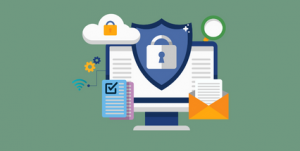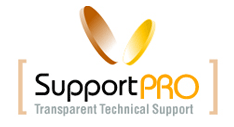

Things are just the same, except that you will never see anyone come to your website in unless you have protection systems in place. Data thieves are invisible and fast, searching for your website for details of your customers’ account data, especially for their e-payment information. You have a legal obligation to protect this data from theft and to report if security breaches occur.
Stealing your data or information is not the only thing on the mind of a hacker: compromising security is a major motivator. Hackers may want to destroy all your records, put a sick message on your customers’ screens or just destroy your reputation.
You can never undo the damage done by a hacker, you can take steps to prevent it. Even the most basic protection will discourage many hackers enough to make them go looking for easier pickings elsewhere. Thieves are likelier to steal from people who leave their doors unlocked.
1. Stay updated
You need to stay up to date with hacking threats. If you have at least a basic knowledge of what is possible then you can protect your website against it. Follow updates at a tech site such as The Hacker News. Use the information you gain to put fresh precautions in place when necessary.
2. Toughen up access control
The admin level of your website is an easy way into everything you do not want a hacker to see. Enforce usernames and passwords that can not be guessed and change like “AvasQ9r_6eDx2”, a combination of lower and upper cases of alphabets, numerics, and symbols. Limit the number of login attempts within a certain time, even with password resets, because email accounts can be hacked as well. Never send login details by email, in case an unauthorised user has gained access to the account.
3. Update everything
Many people who use the software do not install updates immediately. If the reason behind the update is a security vulnerability, delaying an update exposes your websites to attack in the interim period. Hackers can scan thousands of websites an hour looking for vulnerabilities that will allow them to break in. Their internal network is crazy, so if one hacker gets into the website then hundreds of hackers will know as well.
4. Tighten network
Check List:
a) Expire logins after a short period of inactivity
b) Change passwords frequently
c) Choose strong passwords and NEVER written down
d) Scan all devices for malware before they plugged into the network each time they are attached
e) Program for one minute-by-one minute security run for your websites
5. Install a web application firewall
Web application firewall (WAF) a software or hardware, which sets between your website server and the data connection, can help by reading every bit of data passing through it. Cloud-based WAF is the best in available of data processing and data security.
6. Install security applications
There are some free plugins such as Acunetix WP Security can provide an additional level of protection by hiding the identity of your website’s CMS. This tool makes your websites more resilient against automated hacking tools.
7. Hide admin pages
Don’t let your admin pages to be indexed by search engines, so you should use the robots_txt file to discourage search engines from listing them. If they are not indexed, then they are harder for hackers to find. The tutorial from SEObook.com will help you to do it.
8. Limit file uploads
File uploads are a major concern electronic theft. No matter how thoroughly the system checks them out, bugs can still get through and allow a hacker access to your website’s data. The best is to prevent direct access to any uploaded files, store them outside the root directory and use a script to access them when necessary. SupportPRO will help you to set this up.
9. Use SSL
Use an encrypted SSL protocol to transfer users’ personal information between the website and your database. This will prevent the information being read in transit and accessed without the proper authority.
10. Remove Auto-fill Form
When you leave auto-fill enabled for forms on your website, you leave it vulnerable to attack from any user’s computer or phone that has been stolen. You should never expose your website to attacks that utilise the laziness of a legitimate user.
11. Back-up frequently
Just in case the worst happens anyway, keep everything backed-up. Backup on-site, backup off-site, backup everything multiple times a day. Every time a user saves a file it should automatically backup in multiple locations. Backing up once a day means that you lose that day’s data when your hard drive fails. Remember every hard drive will also fail.
12. You can’t hide your code
You can buy software that says it will hide the code on your web pages. It doesn’t work. Browsers need access to your code in order to render your website pages, so there are simple ways to get around web-page “encryption.”
If you require help, contact SupportPRO Server Admin


